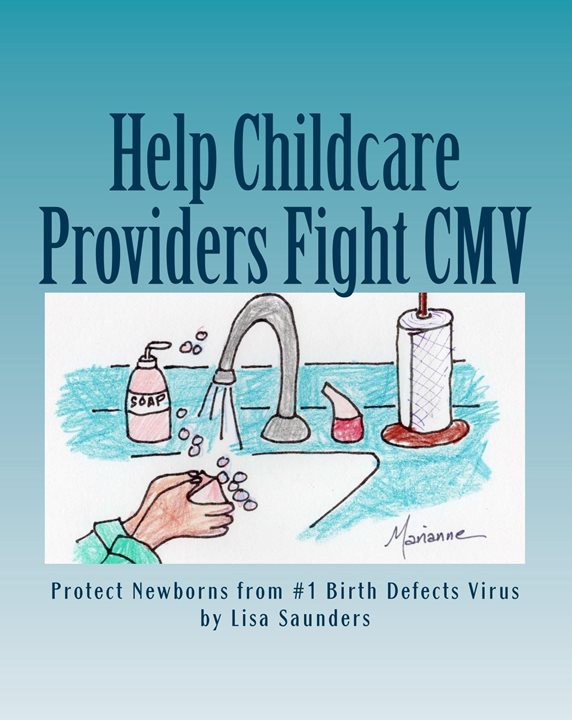Help Childcare Providers Fight CMV
Author: Lisa Saunders

I'm a former licensed childcare provider who, like many across the United States, had never heard of my occupational risk for CMV, the #1 viral cause of birth defects.
CMV is often found in child care centers. I was unaware that
cytomegalovirus (CMV) was an occupational risk for daycare educators when I became a licensed home daycare provider in Maryland in 1987. I didn’t know that CMV could devastate my pregnancy with
Elizabeth, who was born severely disabled by congenital CMV in 1989.
At the time of Elizabeth’s birth, I was operating my licensed home daycare center and volunteering in our church nursery, additionally putting my pregnancy at risk. Elizabeth was born with an abnormally small head, was profoundly mentally impaired, legally blind, and had cerebral palsy. After her birth, I was given information from the Centers and Disease Control Prevention (CDC) informing me that "people who care for or work closely with young children may be at greater risk of CMV infection than other people
because CMV infection is common among young children..." Nowhere in my daycare licensing training was CMV mentioned. CMV prevention measures were not discussed in my prenatal doctor visits.
CMV can be
transmitted via casual contact with bodily fluids such as urine, saliva and mucus. To save time after changing diapers, many childcare providers use diaper wipes to remove urine from hands and surfaces, but diaper wipes do not kill CMV. In a recent survey, only 18.5% of licensed “in-home” daycare providers have heard of CMV (
Thackeray et al., 2016). Each year,
8 - 20% of caregivers and teachers contract CMV, which is understandable given that approximately
44 - 100% of two-year-olds in group daycare are excreting CMV (Pass et al., 1986).
It is a worker’s right to understand occupational hazards, yet very few childcare providers have been counseled about CMV in accordance with the recommendations made by the American Academy of Pediatrics in the book,
Caring For Our Children, which states, "child care staff members should be counseled about risks. This counseling may include testing for serum antibody to CMV to determine the child care provider's protection against primary CMV infection..." To protect the unborn children of childcare providers and those who use their services, I just published the book,
Help Childcare Providers Fight CMV. The book is dedicated to mothers who find out too late about CMV and includes the lyrics to the new song, "Had I Known," by
Debra Lynn Alt of North Branford, Connecticut. The heartfelt lyrics convey how a mother feels when she learns she could have reduced her chances of contracting CMV and spared her baby from the effects of congenital CMV.
There are behavioral changes one can make to help prevent the transmission of CMV during pregnancy. For example, the
CDC states, "Women may be able to lessen their risk of getting CMV by reducing contact with saliva and urine from babies and young children. Some ways to do this are: kissing children on the cheek or head rather than the lips, and washing hands after changing diapers. These cannot eliminate a woman’s risk of catching CMV, but may lessen her chances of getting it.”
To learn more about caregiver precautions and Lisa’s work in educating childcare providers about the risks of congenital CMV, please visit
congenitalcmv.blogspot.com.
Posted: 3/5/2018
Category: Awareness, "Basic Facts", "Fueling Our Mission", Prevention